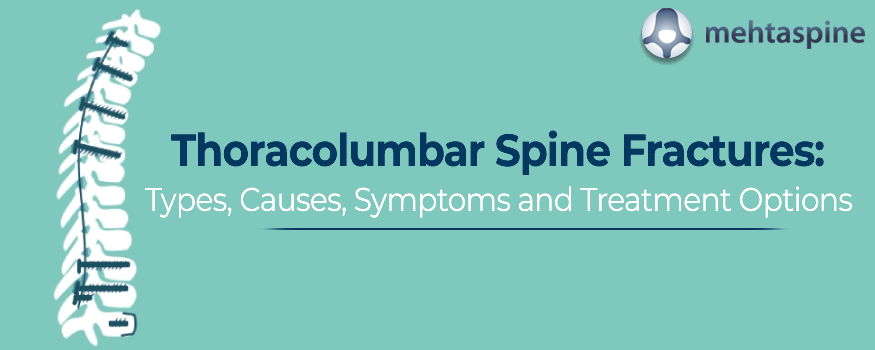Thoracolumbar Spine Fractures: Types, Causes, Symptoms and Treatment Options
The human spine is housed inside a bony spinal column made up of 33 bones that are interlocked and stacked up against one another along with muscle, tendons and ligaments. These bones are called vertebrae and the entire spinal column of these bones are divided into cervical, thoracic, lumbar, sacrum, and coccyx regions.
A fracture (break) to the vertebrae in thoracic and lumbar spine regions is called a thoracolumbar spine fracture. A thoracolumbar spine fracture is a severe injury that can cause ligament damage, vertebra misalignment and injury to the spinal cord and other neurological structures, according to Children and Adult Spinal Surgeon Mr. Jwalant S Mehta. Read on to know more:
What causes thoracolumbar spine fracture?
Events that cause high energy trauma – violent sports injuries, and motor vehicle accidents are the common causes of thoracolumbar spine fractures. The sudden intense and abrupt impact that occurs in these high-energy impact events can crack the bones, rupture the bones, damage the ligaments and harm the spinal cord causing neurological damage.
These types of fractures as their name suggests happening in the transition area of the flexible lumbar spine and immobile thoracic spine. Even low-energy trauma can also cause injury to the invertebrate disc. So depending on the cause and intensity of the injury, the type of thoracolumbar fracture may be classified into:
- Burst fracture
- Compassion fracture
- Chance fracture
- Dislocation fracture
Symptoms and Diagnosis:
Intense back pain and stiffness are signature symptoms of the thoracolumbar spine fracture. But in high-energy trauma events, a patient may suffer injuries to the other body parts as well, and relatively the pain may below to identify the damage in the back. Usually, weakness, numbness in the legs and radiating pain are other symptoms in patients who may have suffered neurological compression. Since the fractures are caused by high-energy trauma events injuries to other body parts and internal organs is possible too.
A thoracolumbar spine fracture is the first thing a spine surgeon or Orthopaedic surgeon in UK looks for when a patient is involved in an accident or major trauma. Medical history, clinical studies, physical and imaging studies are used for the diagnosis by a spine surgeon when it comes to thoracolumbar spine fracture.
Treatment for thoracolumbar spine fracture in UK:
A spine surgeon treats thoracolumbar spine fractures with both non-surgical and surgical treatment options. The choice is made based on the severity of the fracture and the patient’s medical history.
Non-surgical options for thoracolumbar spine fracture include braces and medication. Surgical options include fusing the fractured vertebrae using posterior spinal fusion and also instrumentation where rods and metal screws are used to stabilize the spine.
Anterior and posterior spinal surgery are prescribed by the spinal surgeons in case of thoracolumbar spine fractures where the spine is destabilized severely. In rare cases, surgical decompression may also be required to improve the patient’s ability to recover from neurological damage, happened.
However, the exact type of treatment options prescribed by the spinal surgeon varies based on the types of fractures that were listed above. If you are living in and around Birmingham and are looking for a spinal surgeon London for thoracolumbar spine fracture treatment then you can contact Children and Adult Spinal Surgeon Mr Jwalant S.Mehta here


